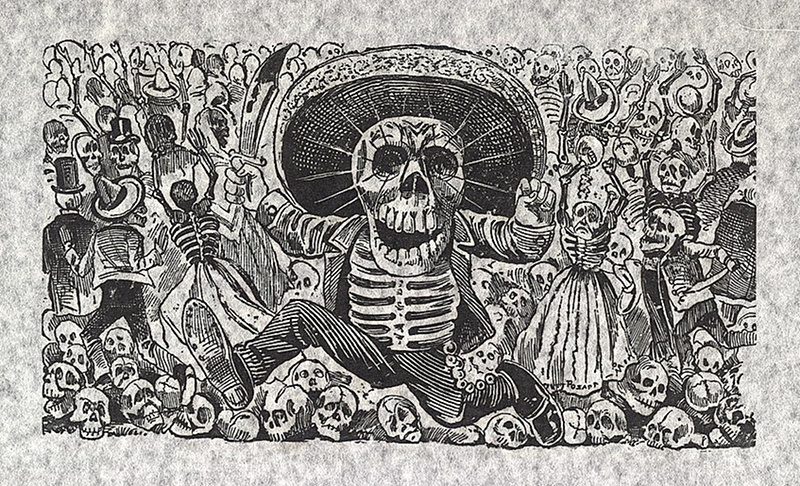Día de los Muertos, or “The Day of the Dead” in English, is the Mexican celebration of All Saints’ Day and All Souls’ Day, a blend of indigenous Mexican traditions and the European Catholic holidays celebrated annually on Nov. 1 and 2. The traditions characteristic of this holiday are an insight into the perspectives Mexican people have on death.
Stanley Brandes, a professor of anthropology at the University of California, Berkeley, has studied the Day of the Dead from historical and ethnographic perspectives that have included traditions from Latin America, Europe and the United States. In 1998, he released the article “Iconography in Mexico’s Day of the Dead: Origins and Meanings,” in which he analyzed the origin and meaning of artistic representations of death, particularly the use of skulls and skeletons, in Day of the Dead traditions.
“No other predominantly Catholic country in the world celebrates All Saints’ and All Souls’ Days [the Day of the Dead] with the artistic exuberance and humor that Mexico does,” Brandes wrote. “In Spain, which brought this holiday to the Americas, the celebration is thoroughly somber. In New Spain [present-day Mexico], at some still indeterminate date, All Saints’ and All Souls’ Days began to assume a humorous cast.”
Art is one of the many windows into a culture. Brandes goes into detail about the usage of art for this holiday, sharing how it consists of small, temporary pieces shared between people around the holiday. Pan de muerto, or “dead bread,” which is bread shaped like bones or skulls, is sold, as well as decorated coffins or skulls made out of chocolate or sugar, sometimes with a person’s name written on them. Parents give their children plastic skeletons and coffins and people hang up paper cutouts. Satirical cartoons, popularized by the Mexican artist José Guadalupe Posada, are commonly shared in newspapers, depicting skeletons doing various activities like riding bikes or representing political figures. While some of the art may seem morbid from a European perspective, it is a normal and celebrated part of Mexican culture.
Some Americans in the United States equate the Day of the Dead with Halloween. On the surface, they share a lot in common. They are both tied to the Christian holidays, All Saints’ Day and All Souls’ Day, with Halloween being the eve of these holidays. Both consist of lively celebrations and treats. But the nuanced meaning behind each holiday is what really differentiates them.
Halloween, like Día de los Muertos, is rooted in the belief that the ghosts of those who have died return on that day. This originates from the ancient Celtic holiday Samhain and was adopted into the traditions of All Saints’ Day. While this seems eerily similar to the Day of the Dead, which also consisted of a mix of indigenous and Catholic traditions, the relationship each population had with the dead was wildly different.
In the article “Halloween” by the editors of Encyclopedia Britannica, the authors share the old traditions of lighting bonfires to scare away evil spirits, and wearing masks to make themselves unrecognizable to the ghosts as traditions rooted in Samhain. While the celebration of Halloween doesn’t center around the return of the dead, it does root in a fear of evil spirits that are still present in its modern celebration. Our fascination with scary movies, haunted houses and monsters in general around this time demonstrates the remnants of the traditional fear.
In contrast, Día de los Muertos is a celebration of loved ones and is rooted in love. In celebration of the holiday, families clean their family members’ graves and light candles to light their way back, a direct contrast to the way the fire was used in old Halloween traditions. The days leading up are filled with good humor, sharing art that laughs in the face of death. The shadow of the native traditions that celebrated the lives of their loved ones is seen in the lack of fear surrounding the holiday. They aren’t afraid of those they lost but are instead welcoming and warm toward them.
Ultimately, the Day of the Dead is a time to reflect and celebrate loved ones, as well as the inevitability of death in general. It is a time set aside for a community to grieve together and acknowledge the relationships they still have, even after the loss of a loved one.



